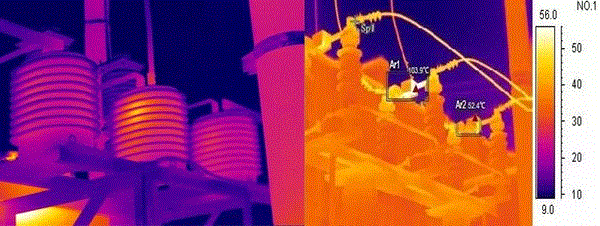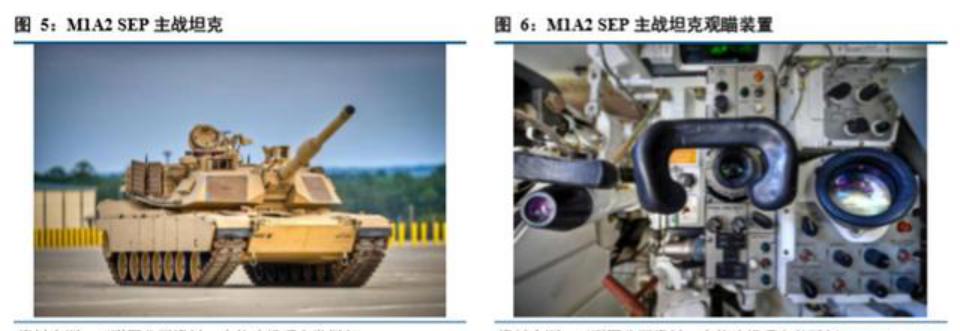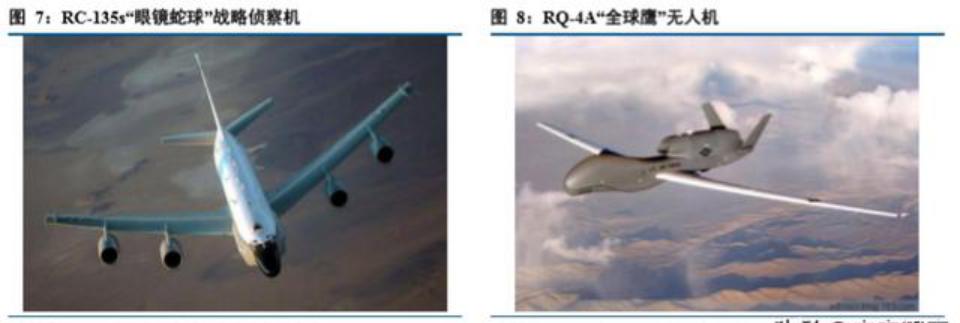The main application types of infrared thermal imager can be divided into two categories: day and night observation and thermal target detection, which have been gradually applied to sea, land and air battlefield since 1970s and 1980s. In order to strengthen their own defense capabilities and improve the standard of night combat, many countries have incorporated thermal imaging technology as an important technology of modern advanced weapons and equipment into their national defense development strategies and plans, and have increased their investment in thermal imaging research and development. After many years of technical iteration and product replacement, the current infrared products in the United States, France and other developed countries in the military popularization rate is high, infrared imaging, infrared reconnaissance, infrared tracking, infrared guidance, infrared early warning, infrared confrontation and so on in the modern war is a very important tactical and strategic means.
From a global point of view, the military infrared products market shows a steady growth trend. According to the U.S. MaxtechInternational infrared thermal imager market survey, military infrared thermal imager will maintain a relatively stable growth rate, the market size is expected to reach $9.251 billion in 2019, and the compound growth rate since 2014 is 3.4 percent. Infrared detectors account for about 13% of the total market size of military infrared detectors and are expected to reach $19 billion in 2019.

Due to the high military sensitivity of military infrared products, the international military infrared market presents a monopoly competition form with the state as the main body.Most of the military infrared detectors are mainly provided to the national military, and the export is not determined by the market, but by the political and military policy of the country. The military infrared detector is mainly refrigeration infrared detector. The technical route and applicability of different suppliers are different, so the enterprises of military infrared thermal imager in different countries generally do not produce direct market competition.
In terms of geographical distribution, the main body of competition is concentrated in the United States, Britain, France, Germany, Japan and Israel.The United States occupies an absolute dominant position, accounting for about 50% of the global sales share of military infrared thermal imager. The top 10 suppliers in the global military infrared market have six U.S. companies, including LockheedMartin, Raytheon and L-3 companies, which account for more than 45 percent of the global military infrared market, according to statistics MaxtechInternational by authoritative organizations.
1 person armed
In the ground weapon system, infrared imaging overcomes the difficulty of active near infrared imaging and low light night vision. The anti-tank missile and rifle equipped with infrared thermal sight can accurately locate, track and shoot the target at night.
In developed countries, infrared thermal imager has been widely distributed in the army, air force, navy and other services, in the Gulf War, an average of 7 infrared thermal imager per American soldier. Compared with developed countries, the application coverage of infrared thermal imager in Chinese army is insufficient.
The ENVGIII/FWS-I integrated night vision targeting program is a kind of aiming device system that the US military is developing to enhance the ability of front-line soldiers to capture targets quickly, with low light + infrared composite night vision capability. The system consists of two subsystems: the third generation enhanced night vision mirror (ENVGIII) and the single soldier weapon quasi-star family (FWS-I). The research and development and integration of the two subsystems are the responsibility of BAE Systems company.
The "single-soldier weapon quasar family" is a thermal image sight that can be mounted on M4 carbines, M249 class machine guns, or even AT-4 bazookas, working to synthesize a large integrated picture of ENVGIII, numbers that are immediately transmitted back to people through wireless data.The army will buy a total of 36,000 FWS-I and 64,000 ENVG-III, according to the U.S. Army, and is expected to start distributing them to special combat units and some infantry units in the spring of 2018.The equipment is expensive, FWS-I costs about $9,500 and ENVG-III $7,000.
2 Land vehicles
Land weapons mainly refer to tanks, armoured vehicles and other military vehicles equipped with infrared imaging equipment.The tanks and other vehicles equipped with infrared night vision equipment can turn off the lights at night, assist the captain to observe and direct at night, and help the gun commander to aim and shoot at night.
M1A2SEP( Systems Enhancement Program) Abrams' main battle tank is at the heart of the Army's 21st Century Force Program, Is the most advanced digital tank in the U.S. Army, American M1A2SEP main battle tanks are equipped with a second-generation thermal imaging system and a vehicle-length independent thermal imager. Against the M1A1, of the Gulf war M1A2 maximum detection distance increased from 4 km to 6.8 km. The second generation forward-looking infrared night vision instrument can realize wide field of view and narrow field of view conversion, The magnification can be switched by 3 times ,6 times ,13 times ,25 times or even 50 times.

3 Reconnaissance and combat aircraft
Airborne infrared detectors are mainly used for aerial reconnaissance and night vision armed.
Aerial reconnaissance surveillance uses human or unmanned reconnaissance aircraft, reconnaissance helicopters and other carrying infrared imaging devices to detect and monitor enemy troops, their positions, terrain and so on.Air Force RC-135 series of aircraft missions are to collect ballistic missile signal features, telemetry data and communications intelligence, as well as theatre ballistic missile defence. RC-135s "Cobra Ball" strategic reconnaissance aircraft has four optical windows, 3 main sensor systems :2 medium-wave infrared focal plane array systems and 1 optical system (RTOS), Can track missile flights beyond 400 km. RQ-4A "global eagle" was produced by Northrop Grumman, Is the most advanced drone in the U.S. Air Force and the world, Global Hawk can carry both photoelectric, infrared sensor systems and synthetic aperture radar, Has an infrared band of μm.3.6-5

Infrared night vision armed forces refer to navigation pods and aiming pods used in various combat aircraft, helicopter gunships, aiming with equipment such as forward-looking infrared cameras, which can be used for navigation and search and capture targets of aircraft flying and attacking day and night, and provide accurate guidance and aiming for guided and non-guided weapons to improve hit accuracy.
The optoelectronic integrated system developed by Northrop Grumman for Lockheed Martin F-35 includes distributed aperture infrared system (DAIRS) and photoelectric targeting system (EOTS). The distributed aperture infrared system is located in the head, abdomen and back of the F-35. It is composed of six infrared gaze infrared focal plane array sensors, using a HgCdTe array of 1024×1024 pixels. each sensor covers 90×90° field of view and cooperates with the helmet display to form a high-definition infrared image, which mainly detects the infrared information of the enemy, and provides the pilot with early warning and indication of the target.
4 Reconnaissance satellites
Reconnaissance satellites carry infrared imaging equipment to obtain more information about ground targets and to identify camouflage targets and monitor military operations on the ground at night.For many countries, optical imaging reconnaissance satellites are generally equipped with infrared imaging systems, such as the "Advanced KH-l1" Satellite" of the United States, the "Cosmos 2344" satellite of Russia and the" Helios 2" satellite of France.
The missile early warning satellite can detect the infrared radiation of the tail flame when the missile is launched and issue an alarm, which provides a certain warning time for intercepting the incoming missile. Among the main reasons for the successful shooting down of Scud missiles during the Gulf War was the early detection of missile launches by the US Defense Support Program (DSP) infrared warning satellite.
"Space-based infrared system (SBIRS)" is an important part of the new anti-missile system in the United States, Is the next generation of space-based missile warning systems being developed by the United States, will replace the previous defense support program (DSP) system. The SBIRS includes six high-orbit satellites and 24 low-Earth orbit and missile tracking system (SMTS) satellites. The six high-orbit satellites consist of four geostationary (GEO) satellites and two large elliptical (HEO) satellites.Each satellite contains short-wave infrared and medium-wave infrared sensors.American Eastern time January 19,2018, the United States Air Force's SBIRSGEO-4( geostationary orbit 4 satellite) launched into orbit.
The four geosynchronous orbits (GEO) are in dual detector mode, each equipped with a high-speed scanning detector and an interactive pair of gaze-based focal plane array detectors. Both scan rate and sensitivity will be more than 10 times higher than the third generation DSP early warning satellite. The scanning detector uses a one-dimensional array to scan the north and south hemispheres of the earth. When strong infrared radiation is detected, the radiation source is observed in detail by the gaze detector. And two large elliptical orbit (HEO) satellites are designed to enhance early warning system surveillance of Antarctica and the Arctic.
Each low-area orbital satellite (SMTS) has two types of independently aligned infrared detectors: a wide-field capture detector and a narrow-field tracking detector with the capability to capture and track ballistic missiles.The acquisition detector uses short wave infrared to capture and track the tail flame of the booster missile engine and detect the synchronous orbit satellite in the relay area. The tracking detector includes four wavelengths, in which the medium wave infrared mainly tracks the early warning target at low altitude, and the medium and long wave infrared, long wave infrared and visible light mainly undertake the tracking and recognition of the middle segment of the missile, thus providing ballistic estimation for the middle segment interception.
5 naval vessels
Shipboard infrared imaging can be divided into night recognition and shooting command (radar, laser, infrared composite) two systems.The infrared imaging system can automatically search, capture and track targets and provide enemy target azimuth and pitch data to the console center computer. It can also be used to detect and alarm enemy missiles, identify them from sea surface, island and horizontal background, and reduce the possibility of anti-radiation missile attack.
One of the remarkable features of the photoelectric tracker is that it is mounted on the mast. Typical equipment includes: French ALIS、CTII、PIRANAIII and VIGY-105 infrared sight and IRIS infrared imaging system based on 288×4 yuan infrared camera; Israel EI-OP's MSIS multi-sensor stable combination system; American TISS thermal imaging sensor system.
6 Infrared guided missile
Infrared guidance is to use the infrared radiation of the target itself to guide the missile to approach the target automatically to improve the hit rate. Infrared guidance is widely used in air-to-air, air-to-ground, ground-to-air and anti-tank missiles.The development of infrared precision guidance technology is divided into three generations:
The first generation of infrared point source homing guidance, with the high temperature part of the target as the guidance signal source, only a single infrared detector, the ability to resist point source interference is poor.First infrared and semi-active radar-guided missiles were launched in 1956 and later called AIM-4 falcons in 1962. Falcon construction is complex, performance is limited, especially poor security, hit rate was only 9. After improvement, the representative model of infrared point homing guidance technology is American rattlesnake AIM-9 short-range air-to-air missile.
The second generation infrared imaging guidance technology, using optical machine scanning and line multiple detectors as the second generation infrared guidance technology logo.The infrared imaging guided missile adopts the combination of refrigeration multi-line detector and rotating optical machine scanning to realize the reading of space two-dimensional image, and can realize the locking before and after launch. Because of the large volume and mass of infrared imaging seeker, it is generally used in large caliber air-to-ground missiles. The typical representative of infrared imaging guidance technology is the AGM-65D "Mavericks" air-to-ground missile developed by the United States in 1975. The missile uses 4×4 yuan infrared mercury cadmium telluride detector optical machine scanning imaging seeker, and later developed infrared imaging guided anti-tank missile.
The third generation advanced infrared imaging guidance technology, characterized by the use of medium and long waves, its iconic technology is the use of staring focal plane array or scanning focal plane array infrared detector technology.The detection wavelength covers long, medium and short wave infrared, and the staring imaging mode of electronic scanning is used instead of mechanical scanning. The representative models of the third generation infrared guidance technology are: AGM-154C "joint defense weapon ", FGM-148" javelin" anti-tank missile. As a portable anti-tank missile used by infantry, the "javelin" anti-tank missile uses long-wave infrared 64×64 cadmium telluride mercury coke plane detector. It has the function of "no matter after launch" and can attack the front armor and top armor of the tank.